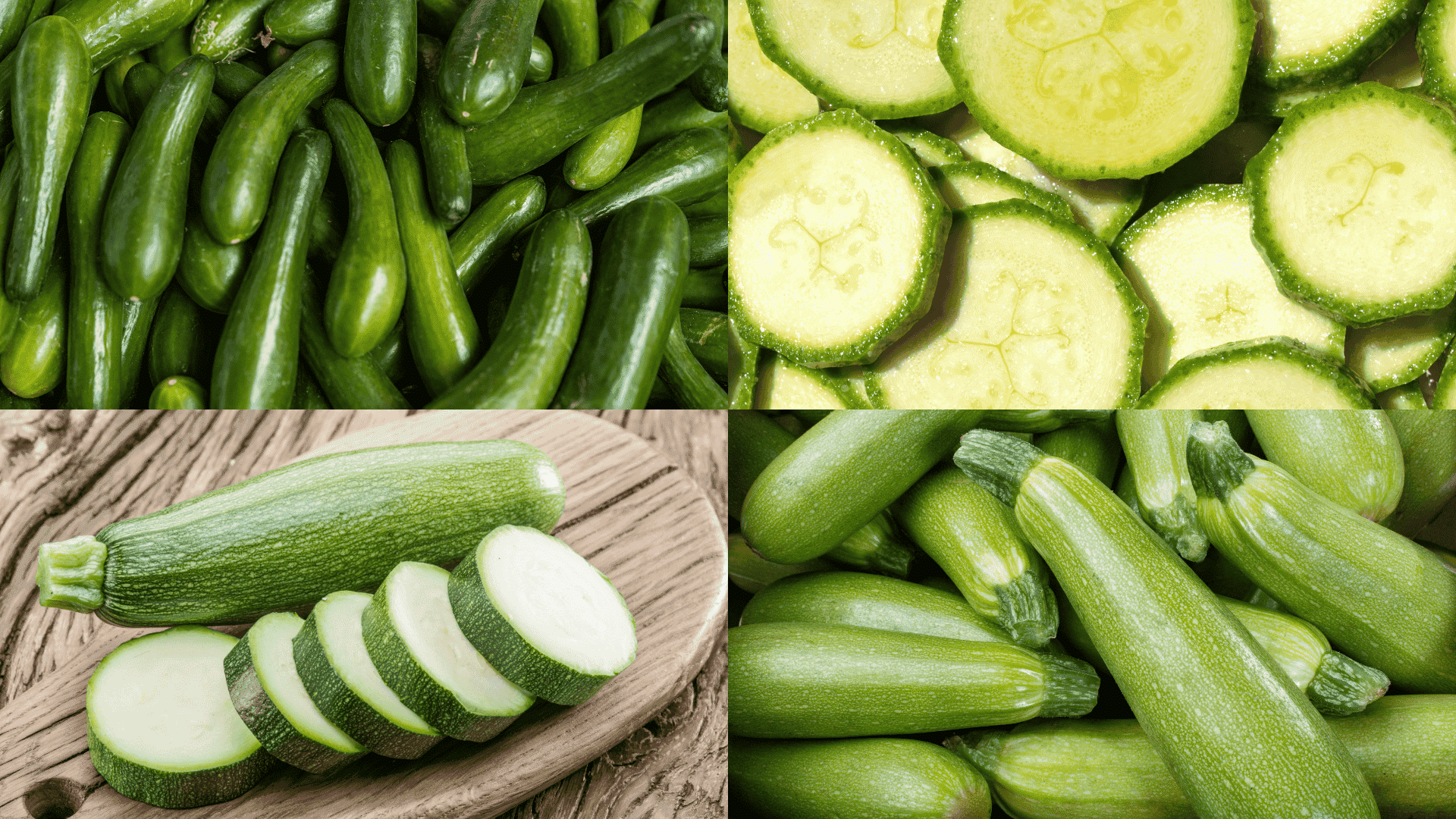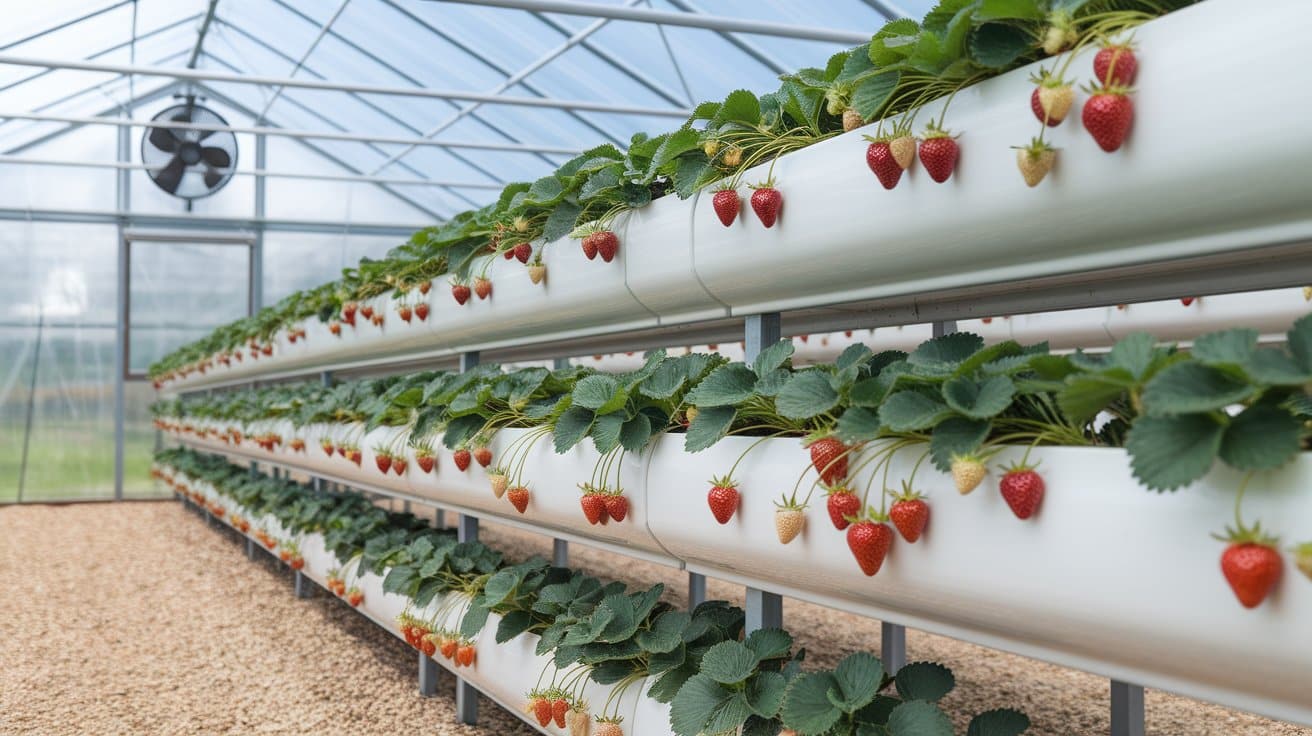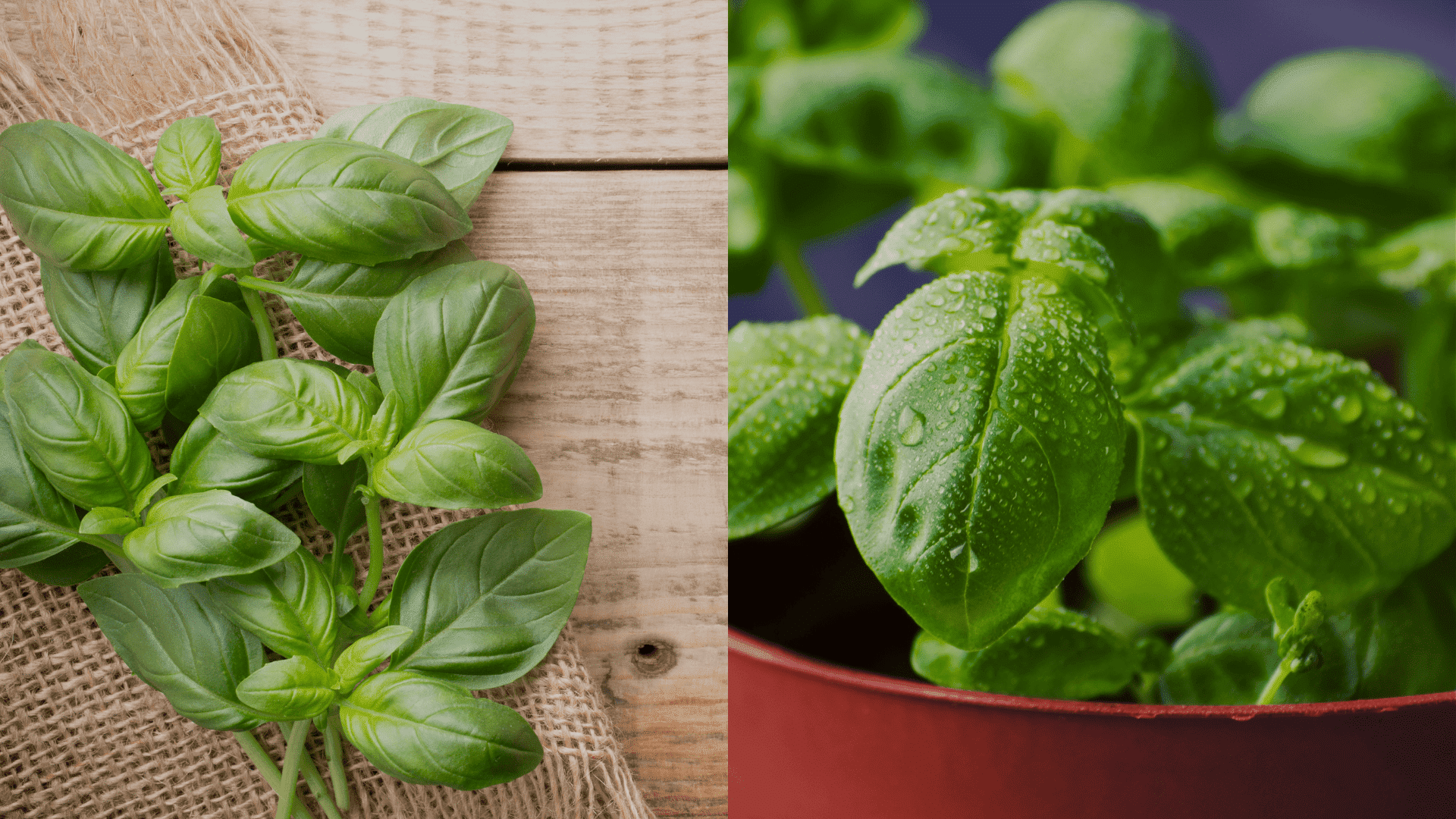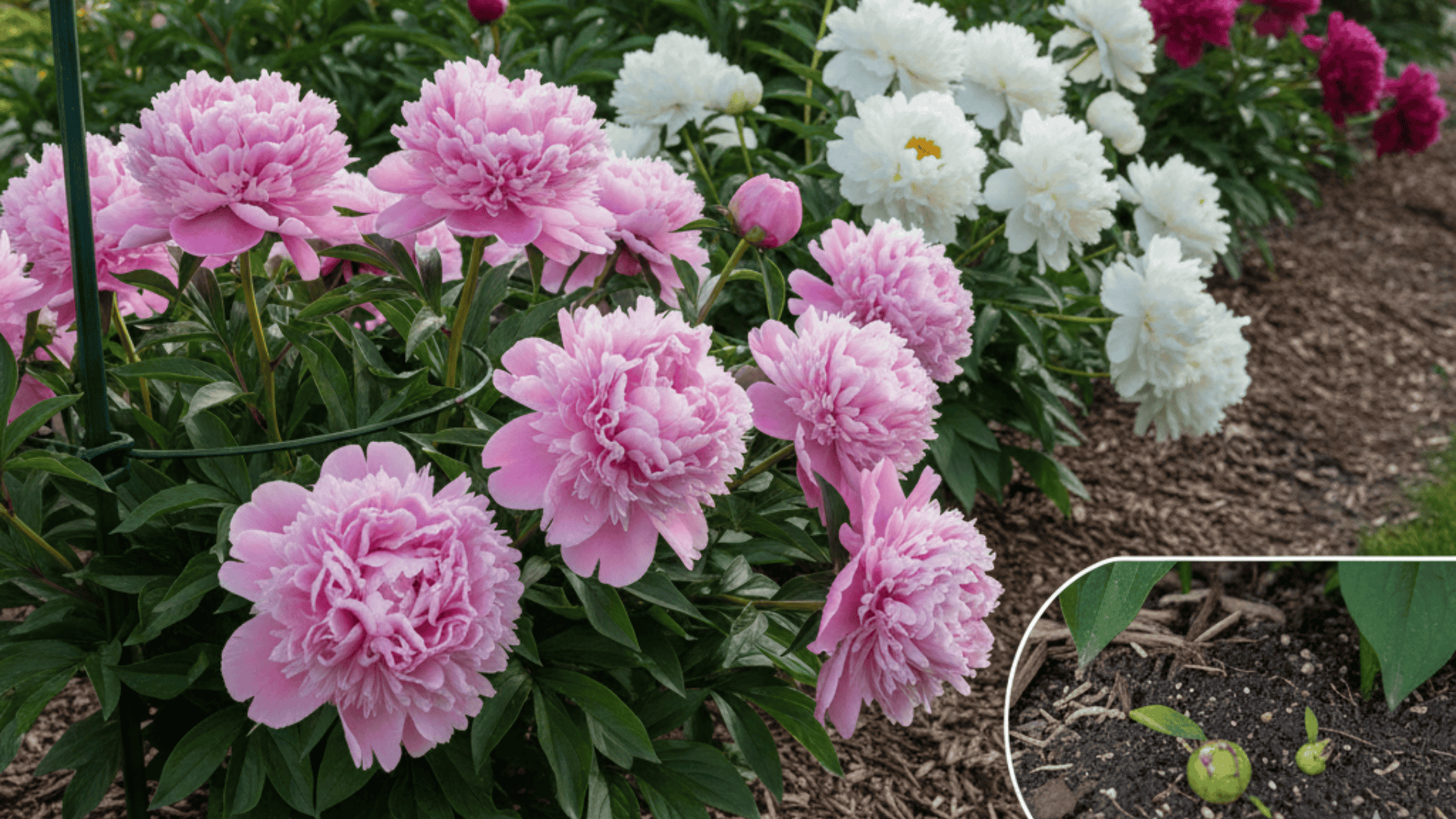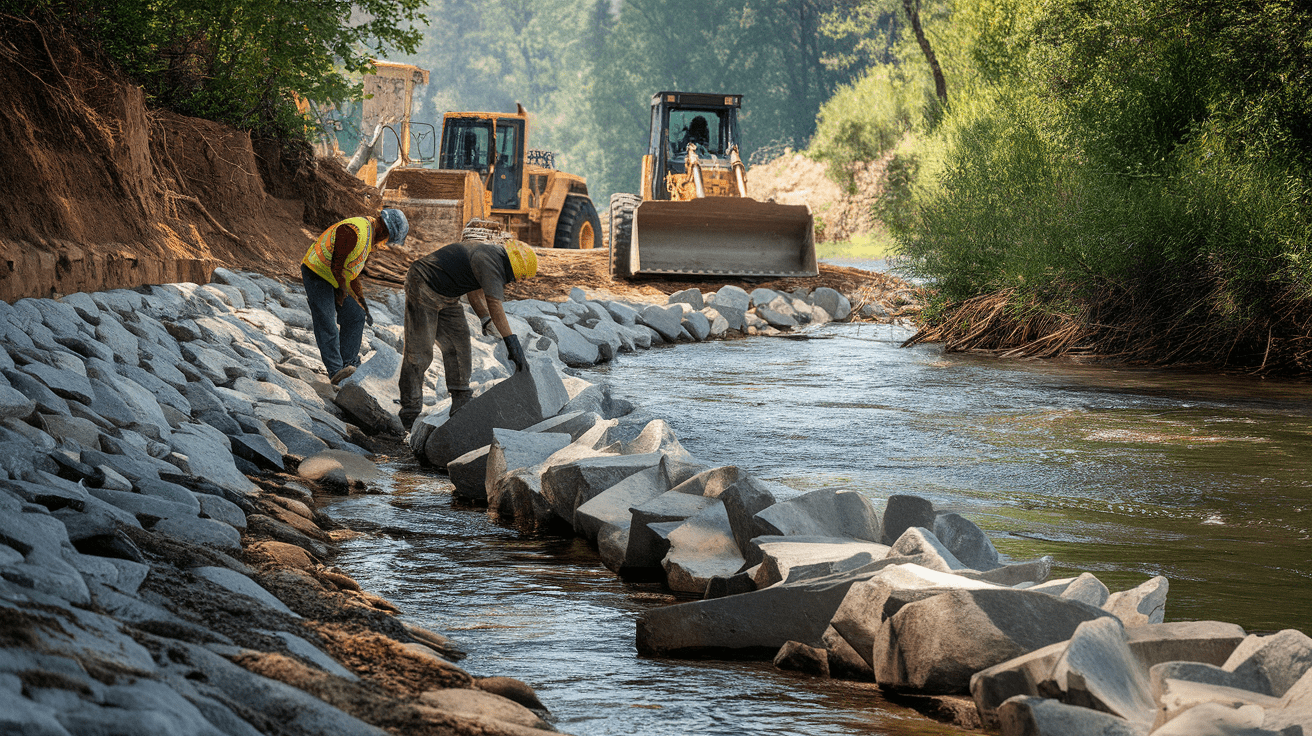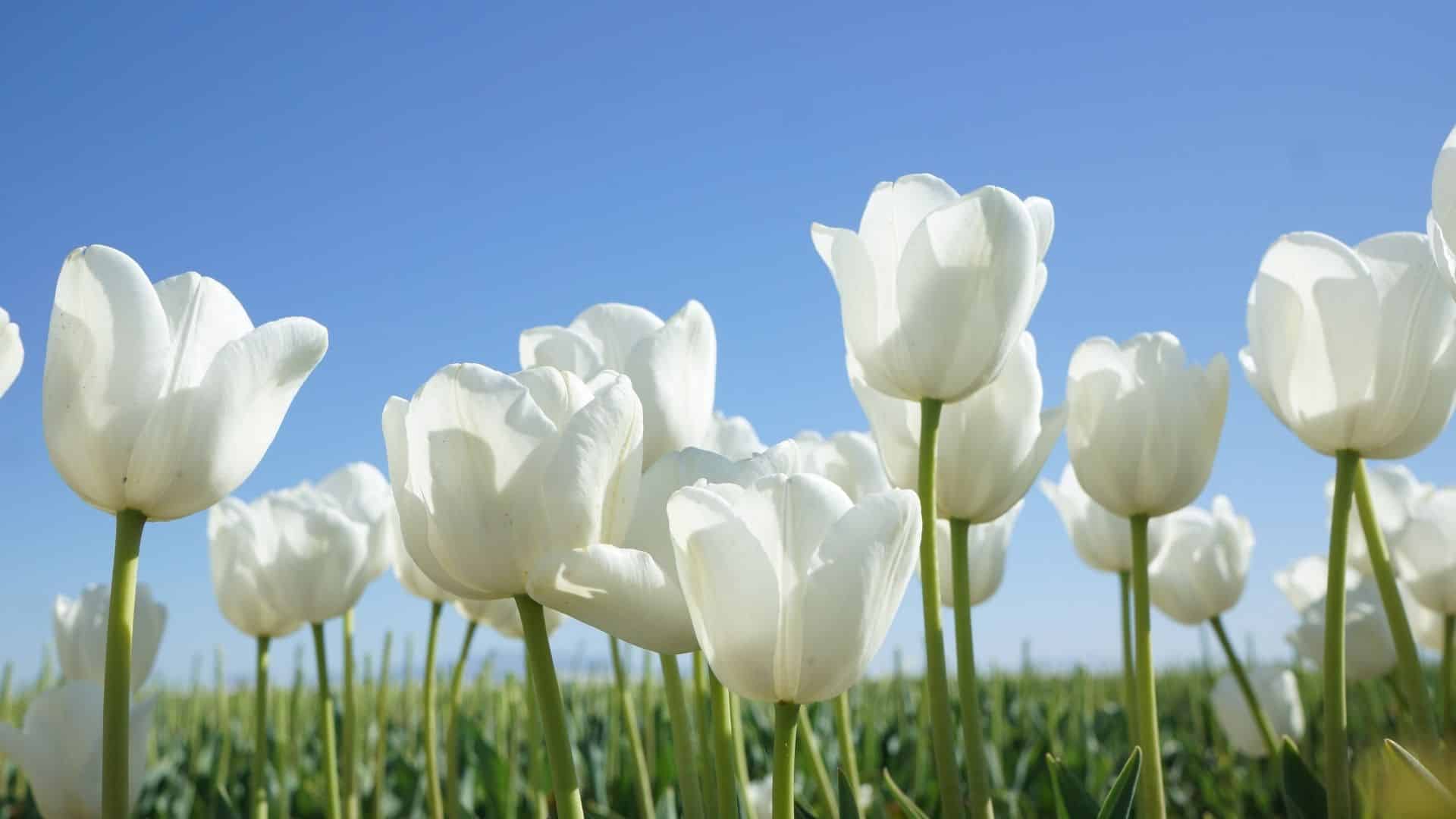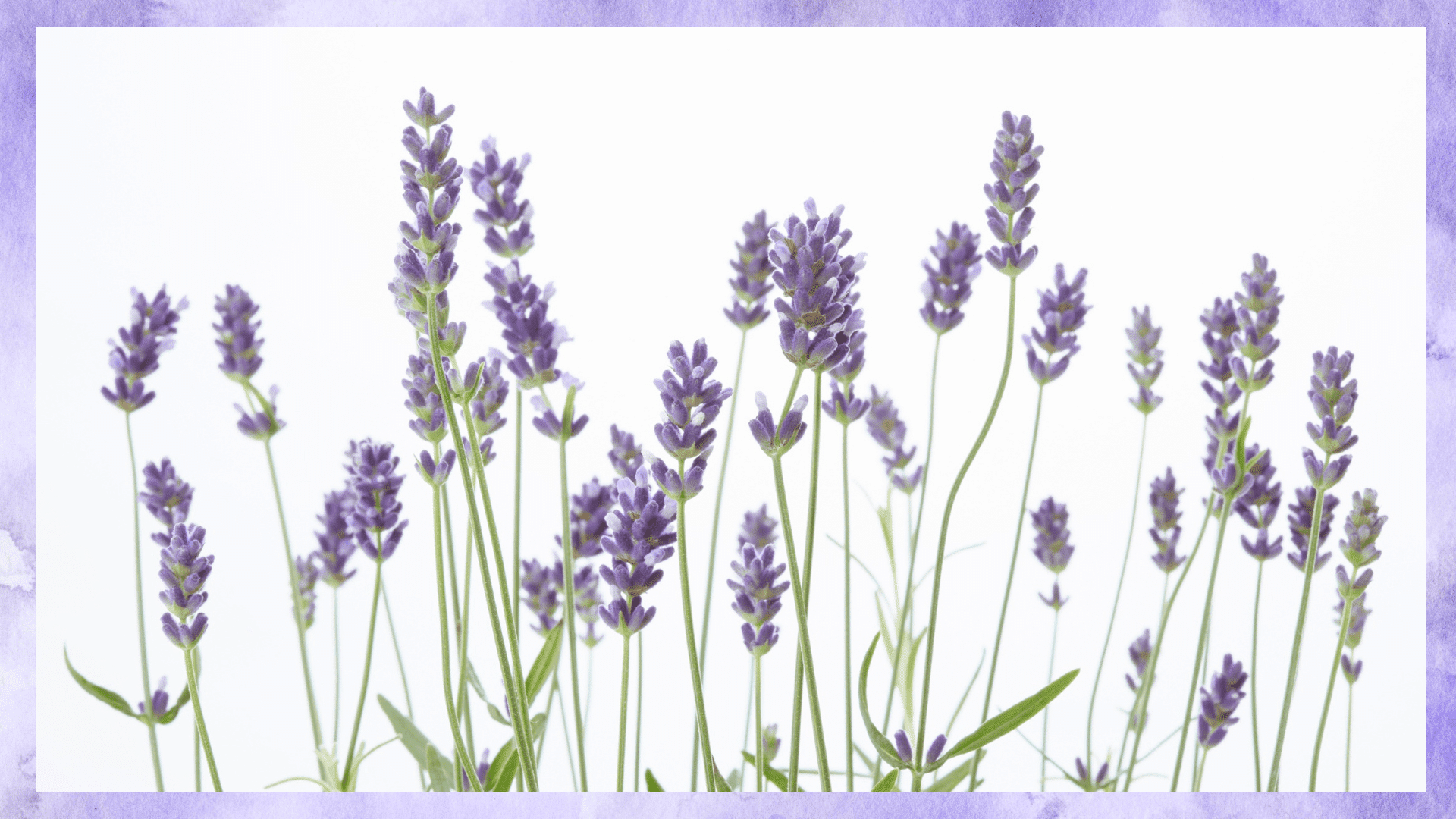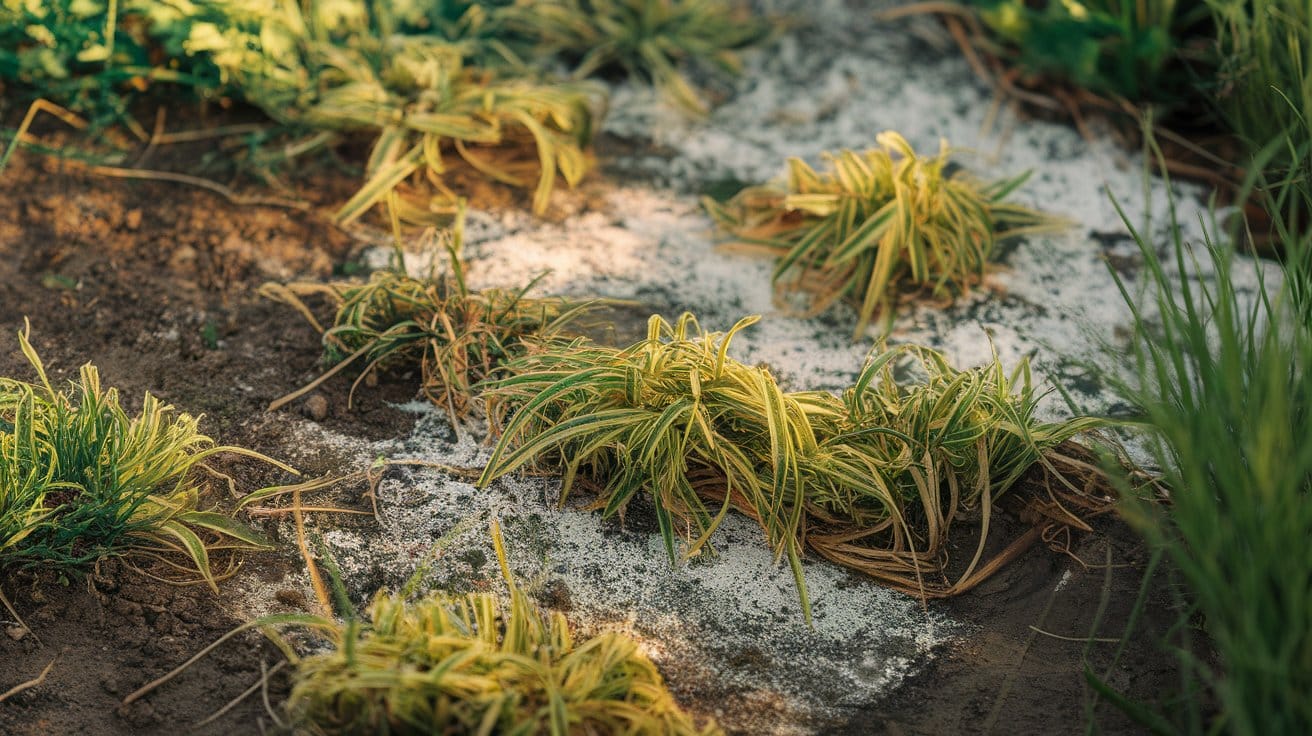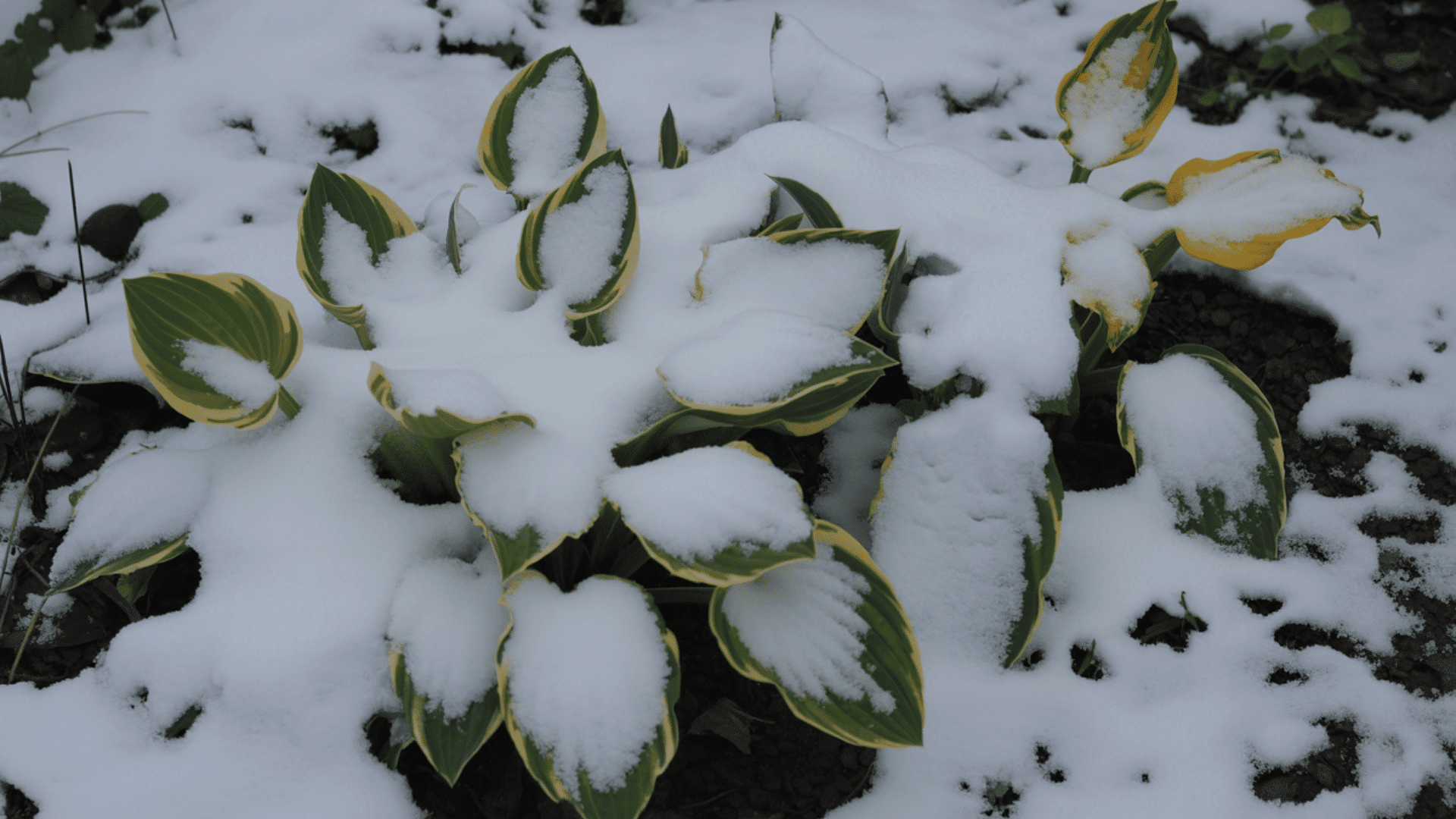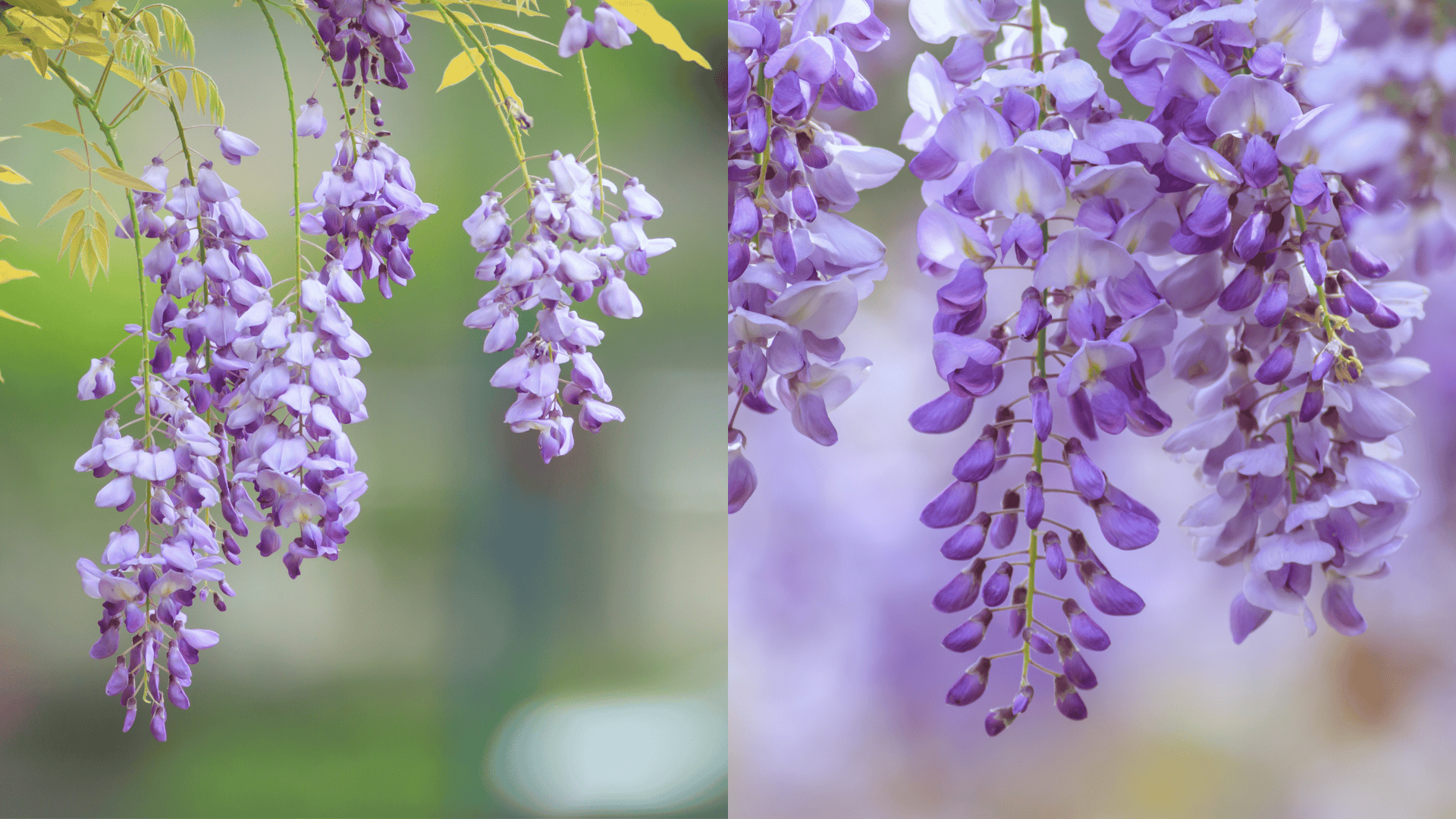Nothing compares to the satisfaction of picking a fresh vegetable straight from your garden, and the zucchini plant is a perfect choice for both beginner and experienced gardeners.
With its delicate, sweet flavor, spongy texture, and impressive productivity, a single plant can yield an abundant harvest throughout the summer.
Growing zucchini requires attention to sunlight, soil, and pruning, but the results are rewarding.
From selecting the right variety to learning proper planting, care, and harvesting techniques, understanding the needs of your zucchini plant can change your garden into a
How to Prune Zucchini Plants?
Pruning zucchinis is important as it increases circulation, reduces disease risk, promotes new growth, improves fruit production, and makes harvesting easier.
Removing the oldest, overlapping, and lower leaves exposes the plant to more sunlight and increases stimulation.
Here’s how to prune zucchini:
- Gather Tools: Use a sharp pair of pruning shears to make clean and easy cuts.
- Remove Lower and Problematic Leaves: Cut off all the leaves that look yellow, brown, or diseased; are close to the lowest formed fruit and main stem; and leaves that are resting on the soil.
- Prune for Air Circulation: Pruning away leaves helps with better airflow, which helps prevent fungal diseases.
- Harvest Regularly: Harvest the zucchini when they are young, which is about 6-8 inches long; this helps the plant produce more fruit.
Pro Tip: Prune early morning, avoid pruning aggressively, and don’t over-prune.
Zucchini Plant Varieties
There’s a wide range of shapes, sizes, colors, and textures in zucchini varieties.
Here is a small overview of a few zucchini varieties to make it easier for you to choose the right one:
1. Bianco Di Trieste Zucchini
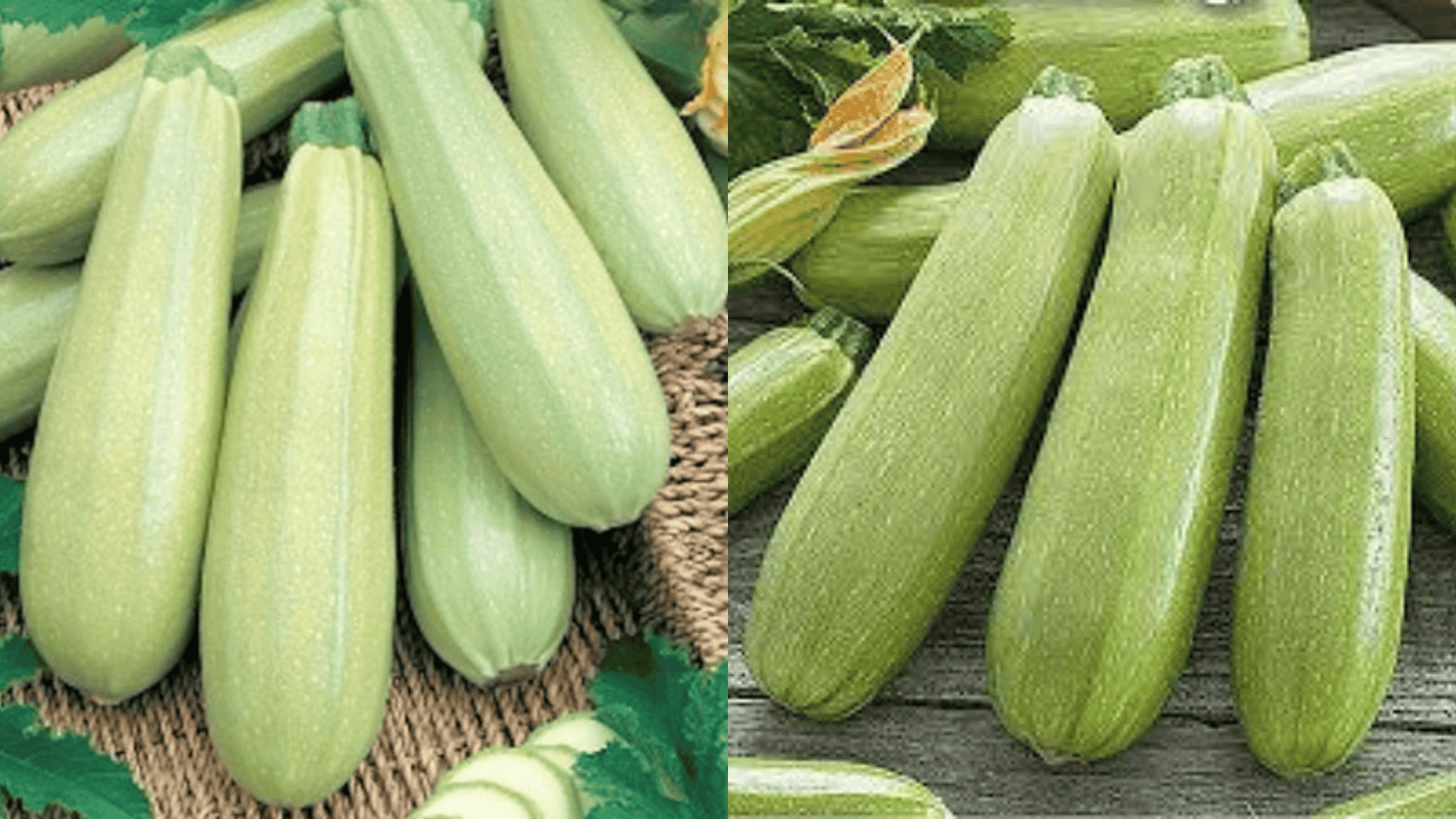
Bianco Di Trieste Zucchini is an heirloom Italian variety known for its creamy texture and pale green, tender flesh.
Its fruits are typically short and compact, harvested at 6-8 inches in length for the best flavor.
2. Black Beauty Zucchini
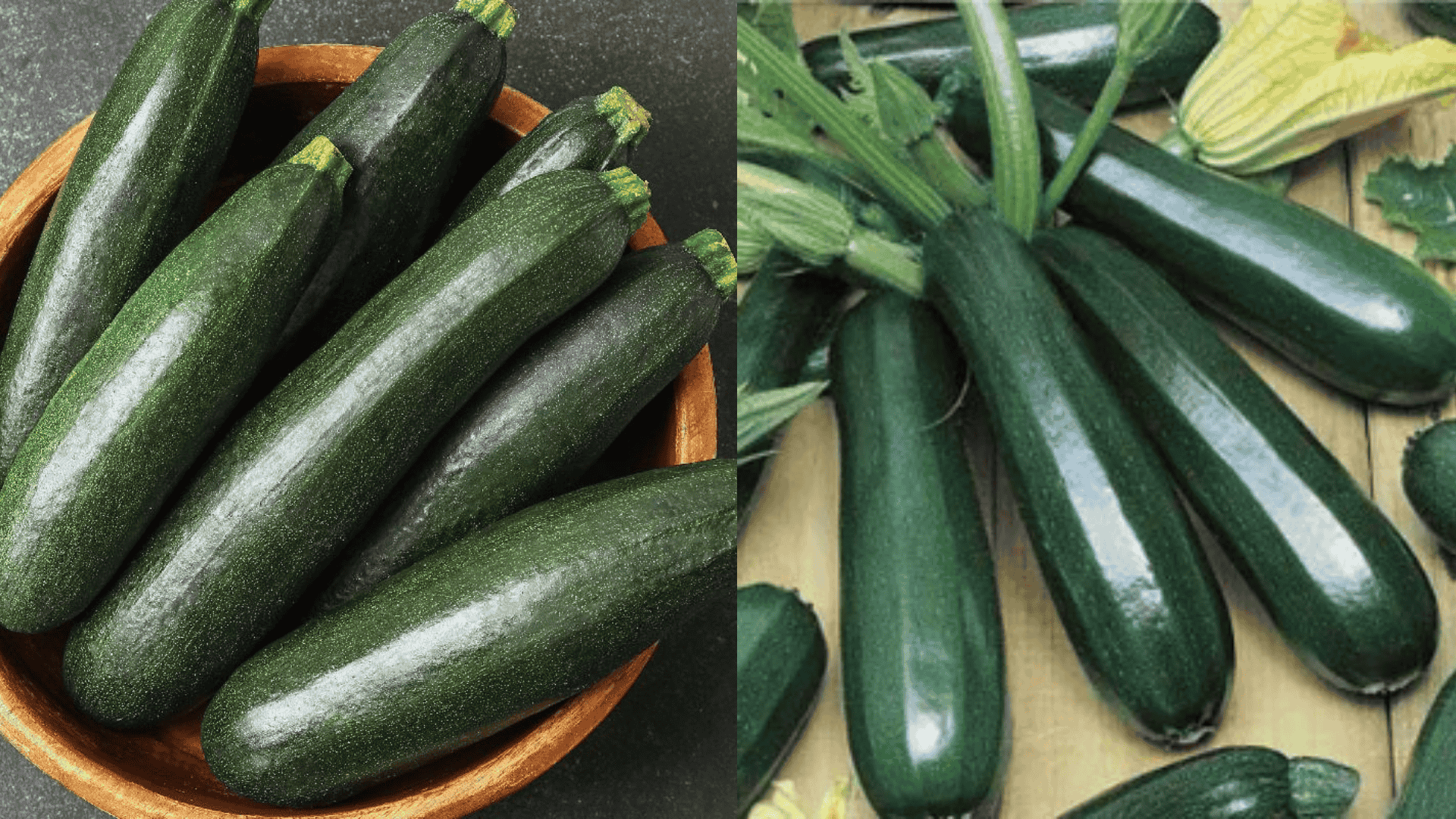
Black Beauty Zucchini is a very dark, blackish green coloured, long fruit with a creamy white flesh, which can be harvested at any point.
The fruits have a mild taste and a firm texture.
3. Classic Green Zucchini
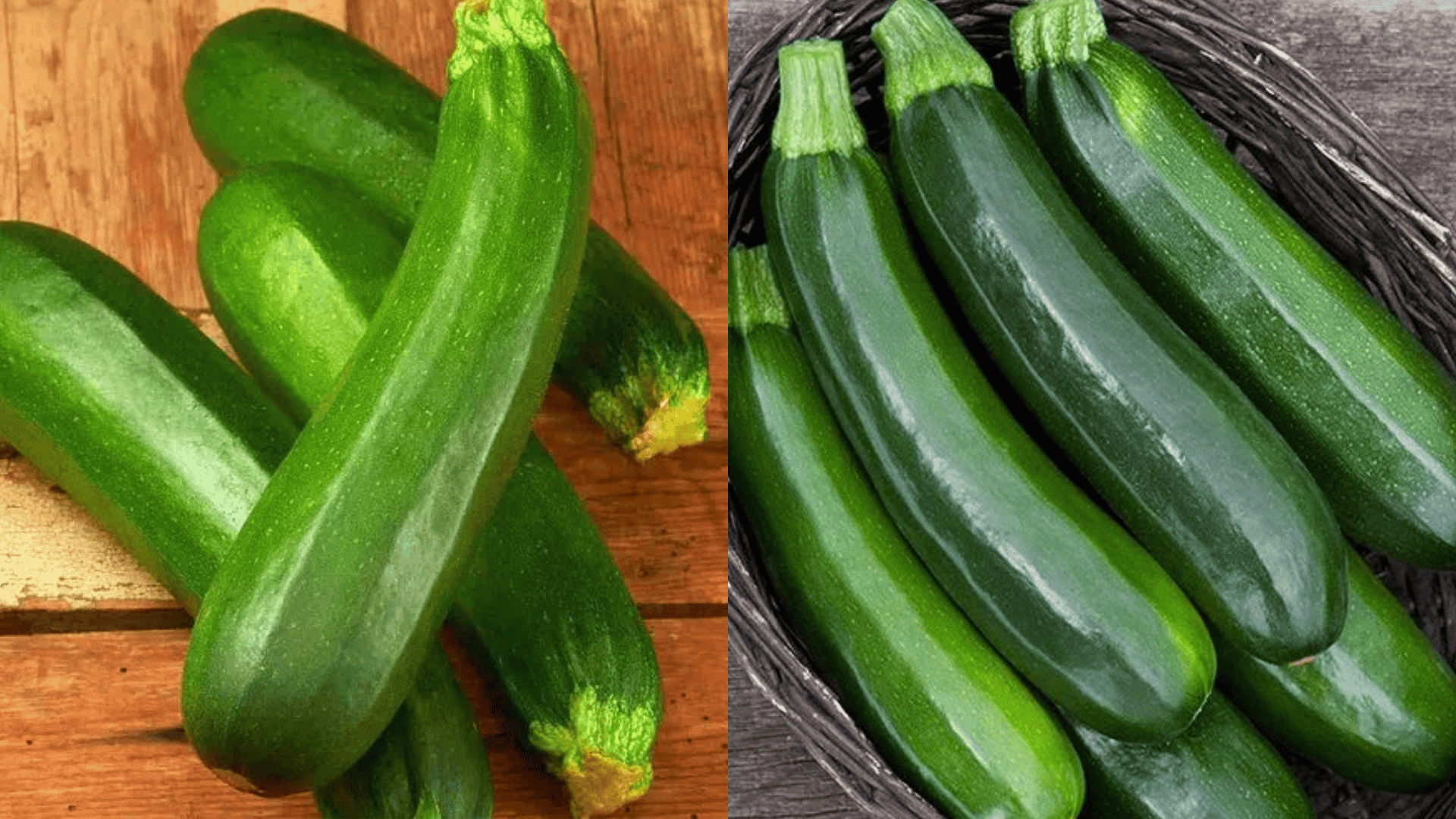
Classic Green Zucchini is known for its high water content, which is more than 95% water by weight.
They have smooth, dark green skin, tender texture, and a mild flavor.
They are rich in vitamins A, C, potassium, magnesium, and folic acid.
4. Cocozelle Zucchini or Striped Zucchini
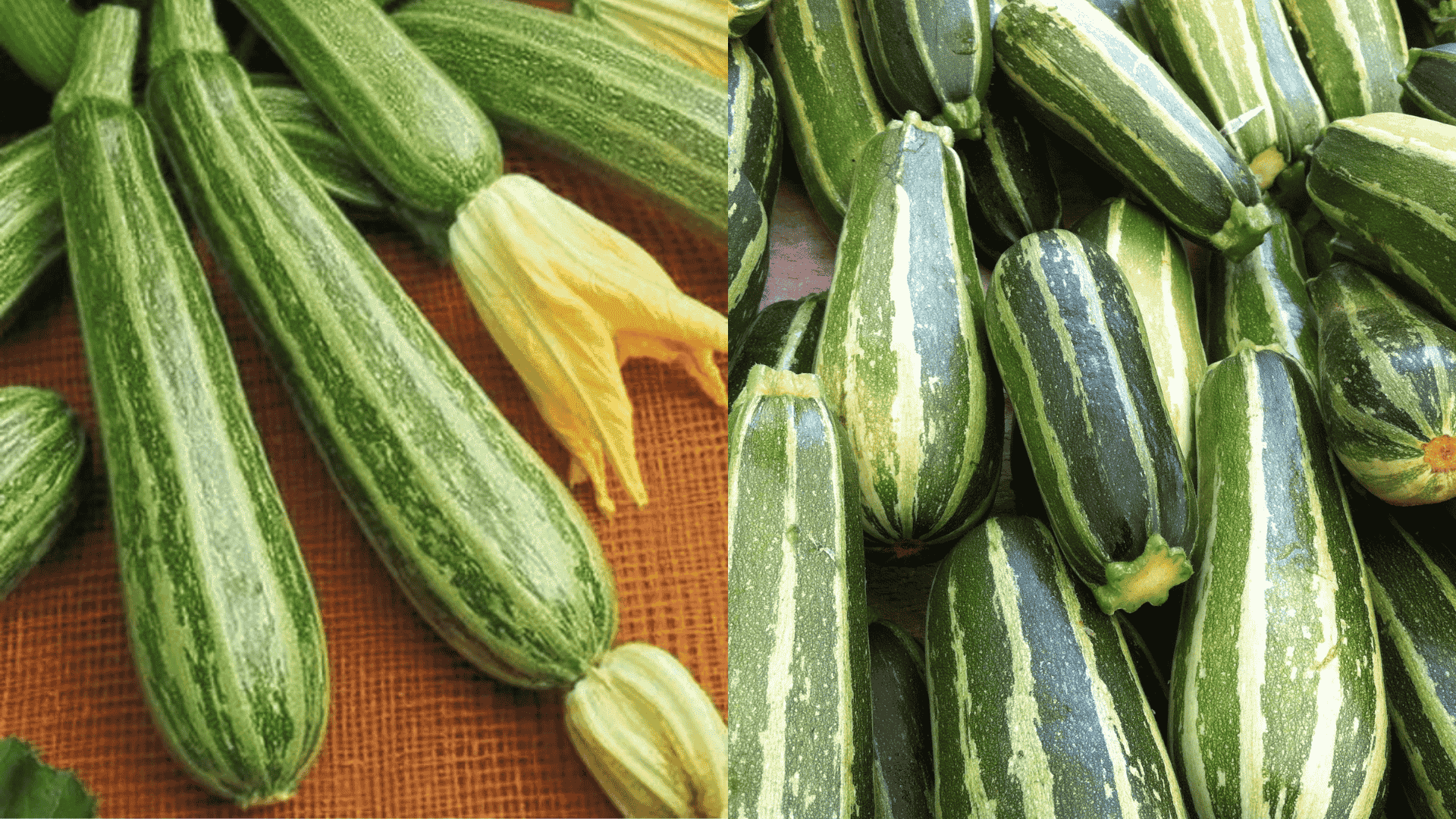
Cocozelle Zucchini is recognized for its alternating light and dark green stripes, nutty flavor, and firm yet creamy flesh.
They are vigorous and relatively easy to grow in small gardens.
5. Costata Romanesco Zucchini
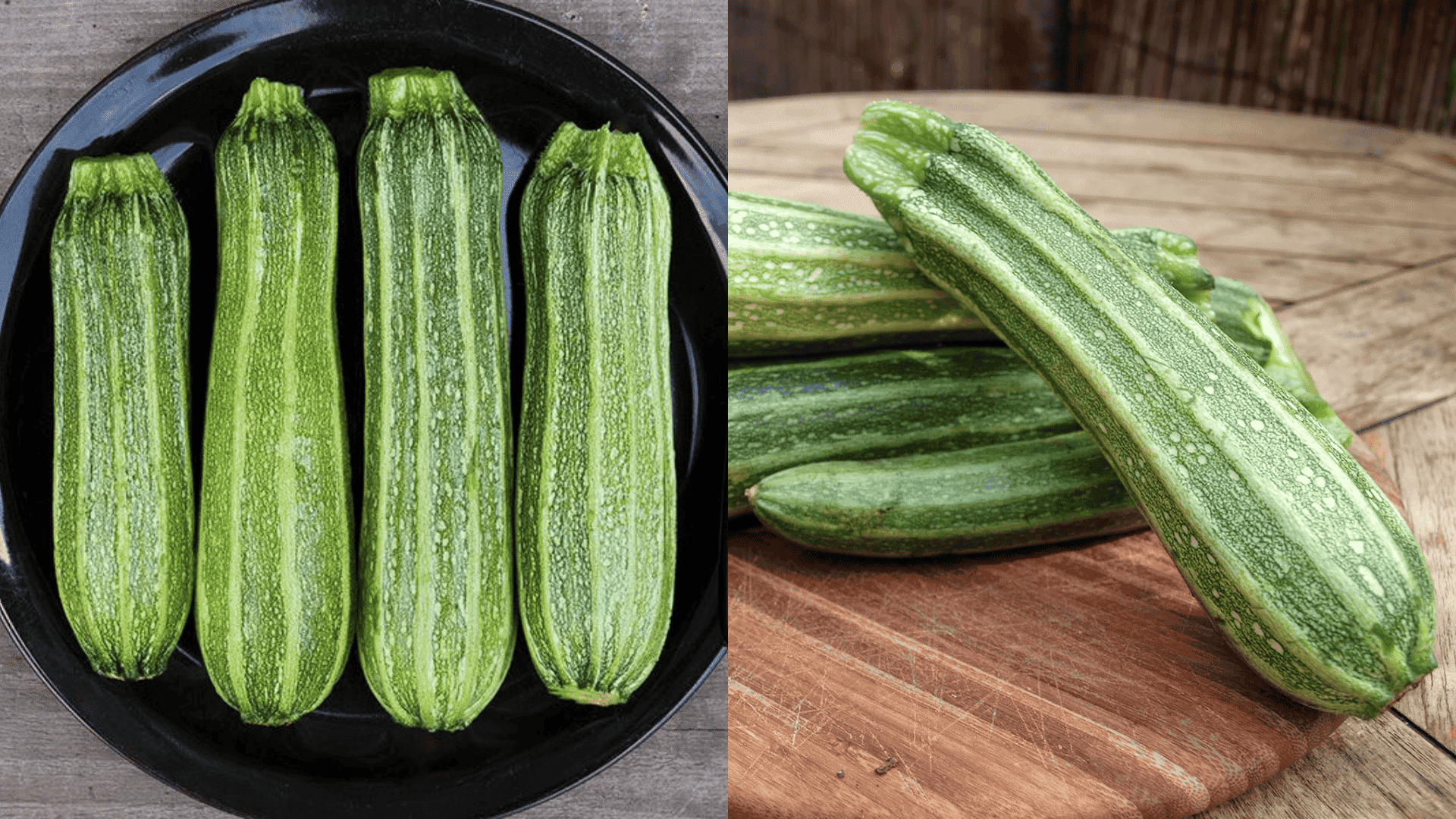
Costata Romanesco Zucchini, known for its grey skin with pale green peckles and prominent ribs, is not a typical zucchini.
It has a dry, meaty, and tender texture and a sweet, rich, nutty flavor profile, making it perfect for cooking.
6. Lebanese Zucchini
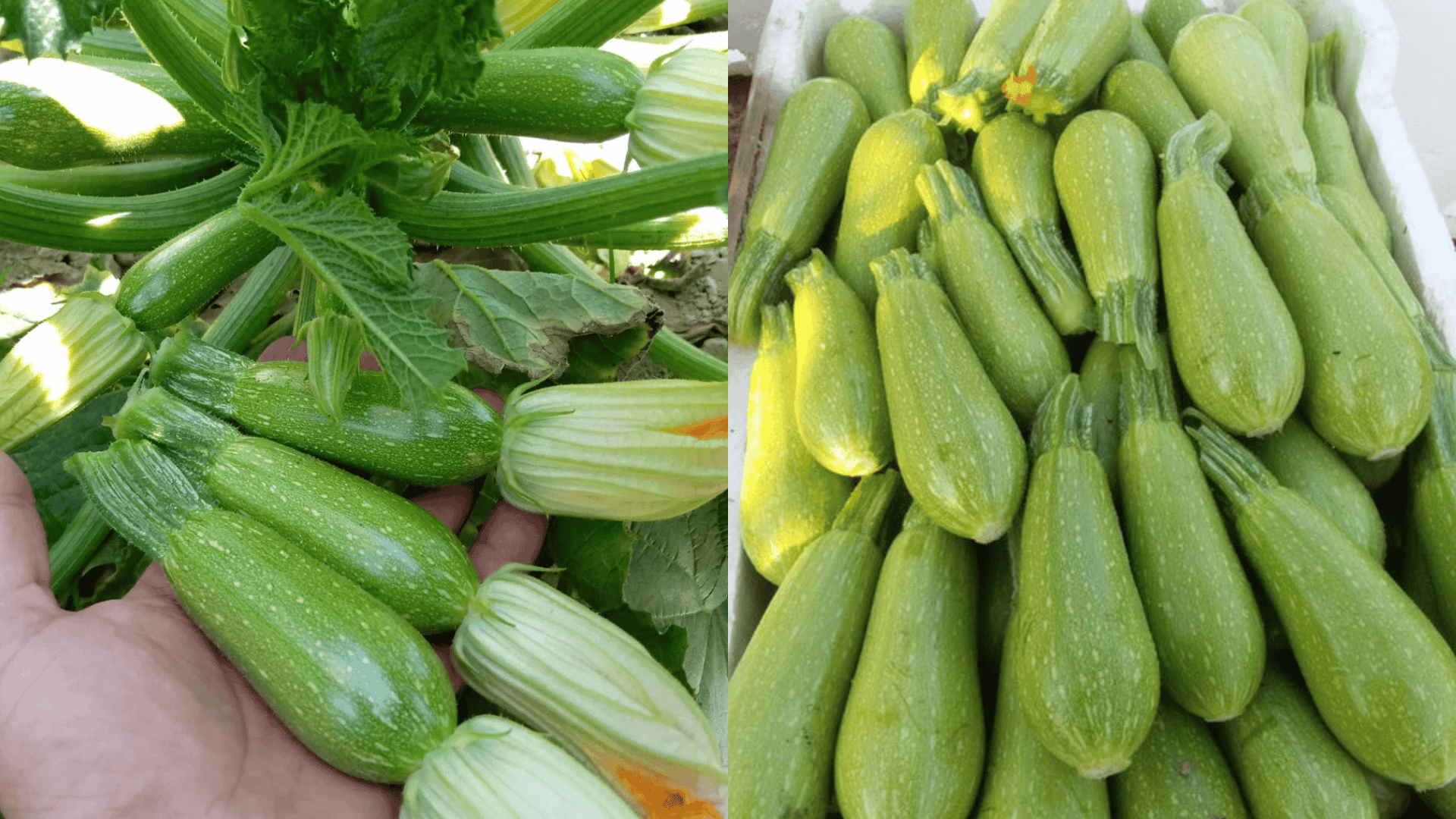
Lebanese Zucchini is shorter, paler, and plumper with a more delicate skin as compared to other common, dark green zucchinis.
It has a mild, sweet taste and holds its shape while being cooked.
7. Green Bush Zucchini
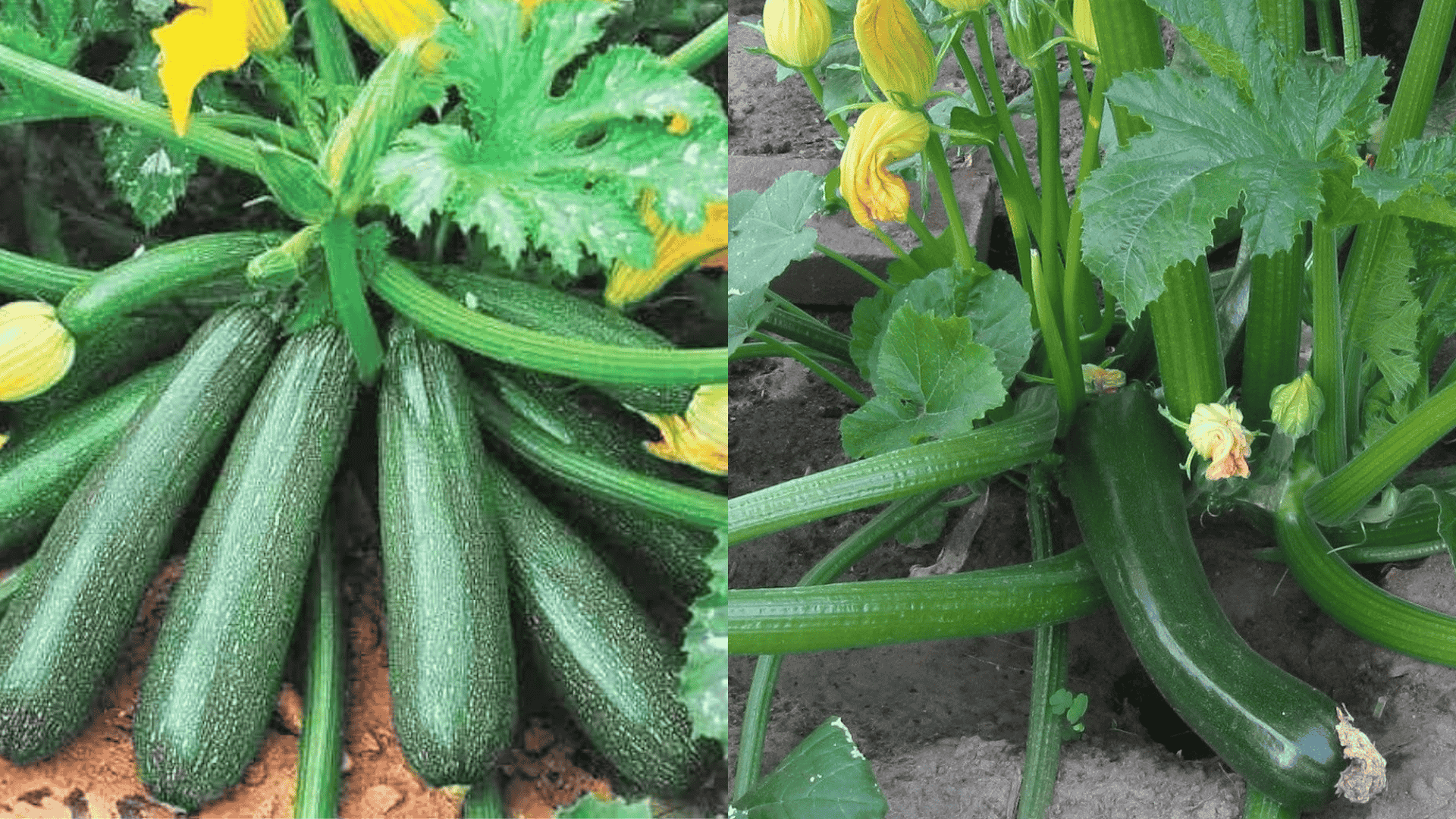
Green Bush Zucchini, known for its uniform, dark green, and tender fruit, is a compact, non-vining variety of green zucchini.
It’s suitable for small gardens and containers.
Requirements for Growing Zucchini Plants
Before planting, it’s important to know the climate and soil requirements that zucchini depends on.
Climatic Requirements:
- Zucchini is a summer crop that requires warm temperatures, ideally between 64 and 75°F, and direct sunlight for at least 6-8 hours every day.
Soil Requirements:
- Zucchini grows best in loamy and fertile soil.
- The soil should drain well to prevent water clogging.
- Planting in mounds or hills helps with drainage.
- The soil requires generous amounts of compost or well-rotted manure to improve fertility and water retention.
- The pH of the soil should stay between 6.0 and 7.5.
Here’s a short overview of the soil requirements:
| Type | Loamy |
| Drainage | Well-drained |
| Organic Matter | High |
| pH | 6.0-7.5 |
How to Plant, Grow, and Harvest Zucchini?
Zucchini plants are vigorous and generous if given enough space, sunlight, and care.
They are very prone to fungal diseases, so proper watering, pruning, and harvesting techniques are essential for the best results.
Below is a more detailed guide to planting, growing, and harvesting zucchini for better yields and healthier plants.
1. Planting
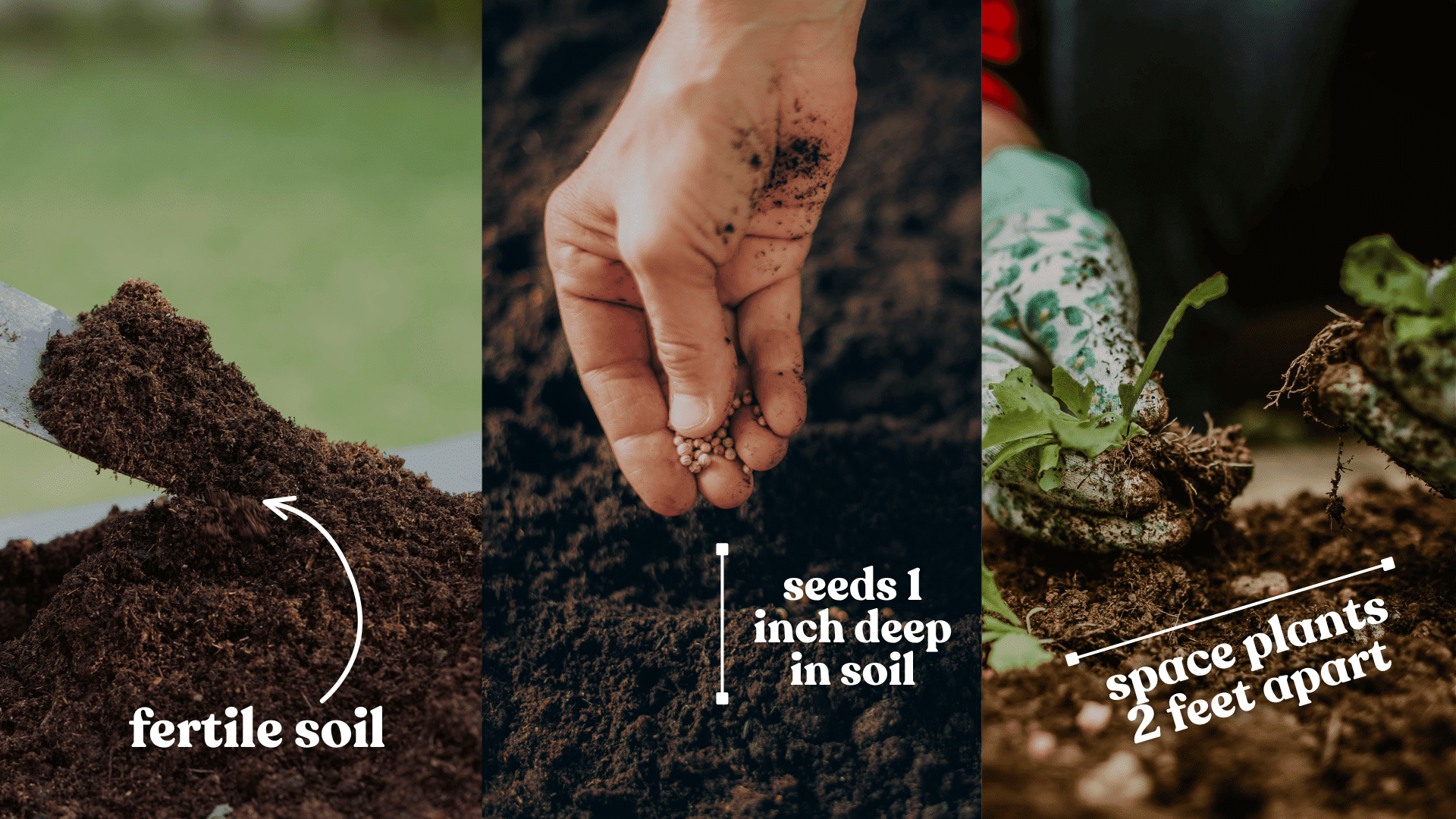
Start your zucchini on the right foot with proper soil preparation and spacing.
- Choose well-drained, fertile soil rich in organic matter and work in compost or aged manure before planting.
- Plant seeds 1 inch deep, placing 2-3 seeds per hole, then thin to the strongest seedling once true leaves appear.
- Space plants 2 feet apart with 3-4 feet between rows for proper air circulation.
- Plant in warm soil between 68 and 84°F for best germination.
- Wait 1-2 weeks after the last frost date before planting outdoors.
2. Growing
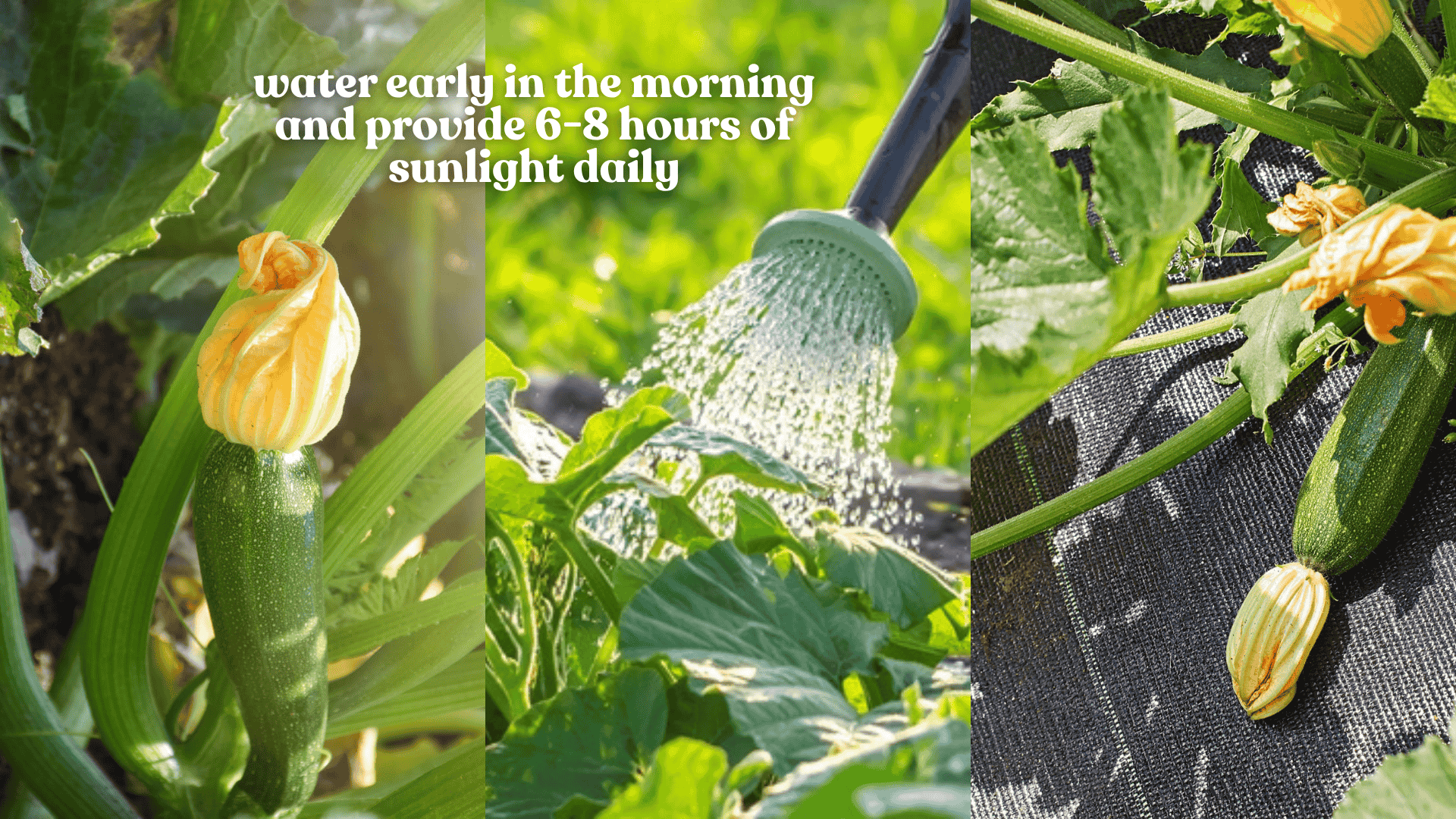
Keep your zucchini healthy with consistent care and attention to sunlight, water, nutrients, and pruning.
- Provide at least 6-8 hours of direct sunlight daily for optimal fruit development.
- Water early in the morning at the base of plants, keeping soil moist but not soggy with 1-2 inches of water weekly.
- Apply mulch around plants to retain moisture and control weeds.
- Fertilize every 4 weeks with balanced fertilizer, switching to phosphorus-rich fertilizer when flowering begins.
- Prune regularly by removing lower, yellowing, or diseased leaves to improve air circulation and reduce disease risk.
- Monitor for pests like squash bugs and cucumber beetles, removing them by hand.
3. Harvesting
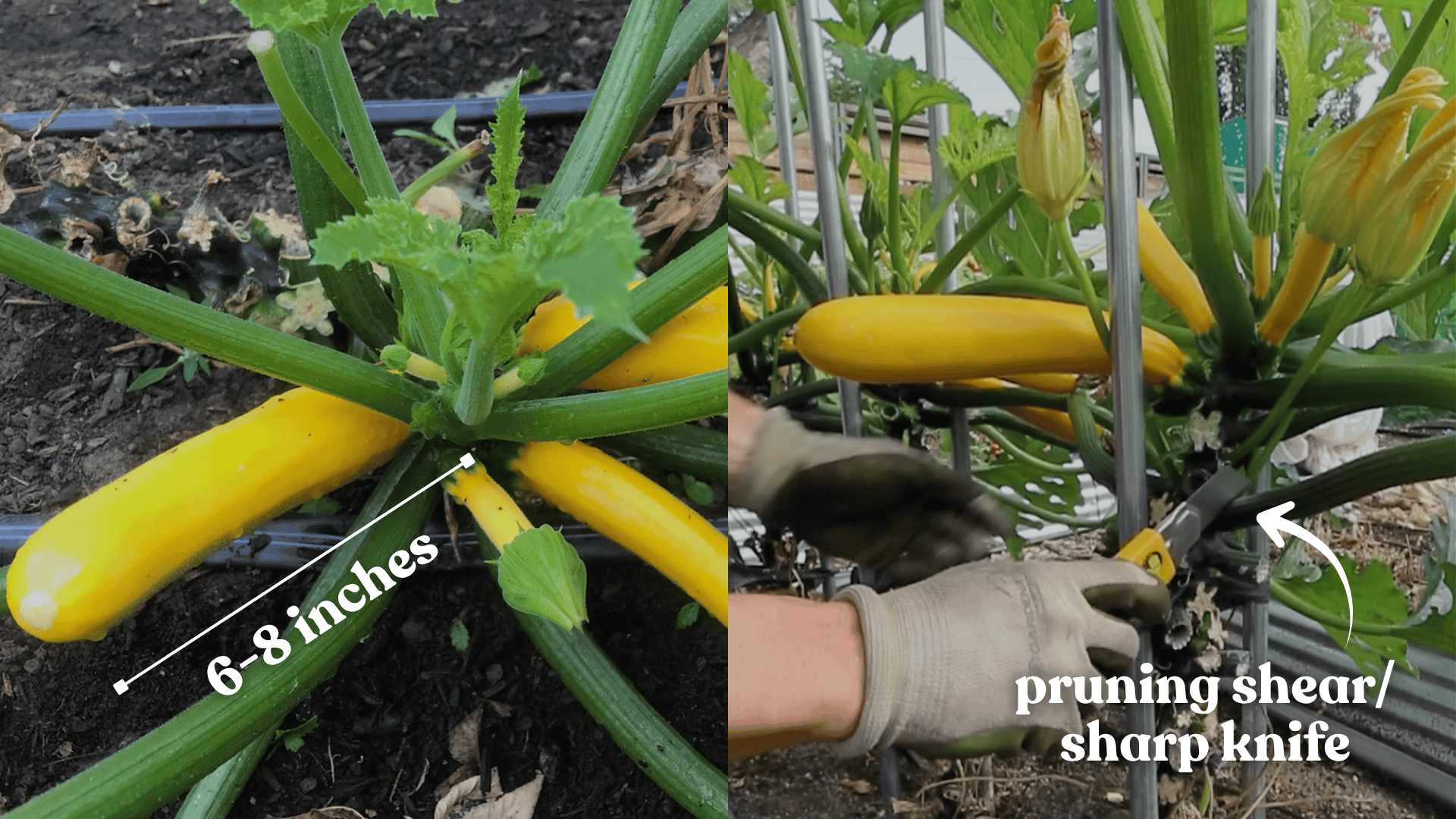
Pick your zucchini at the right time and harvest often to maximize production.
- Harvest when young and tender at 6-8 inches for the best flavor and texture.
- Use a sharp knife or pruning shears to cut fruit, leaving an inch of stem attached without twisting or pulling.
- Check plants daily during peak season as the zucchini grows rapidly.
- Harvest every 1-2 days to encourage continued fruit production.
- Remove any oversized zucchini to maintain plant productivity.
Conclusion
The secret to growing zucchini is consistency, and with regular watering, nutrient-rich soil, pruning, and 6-8 hours of sunlight every day, zucchini flourishes.
Growing zucchini using proper techniques can be super rewarding.
The key is to plant, fertilize, and harvest the zucchini well.
Make sure to prune regularly and not let the zucchini get too big before you harvest.
Remember, the more you harvest, the more your plant will produce.
Don’t be discouraged if you encounter challenges along the way; every gardener learns through experience, and zucchini is quite forgiving for beginners.
Have you ever tried to grow a zucchini plant before?
Share your experience in the comments below!
Frequently Asked Questions
Is Cucumber the Same as Zucchini?
No, zucchini and cucumber are not the same. While they both look similar, they are different species with different tastes, culinary uses, and flavor profiles.
How Long Does It Take for Zucchini to Grow?
Zucchini seeds germinate in one to two weeks after sowing and mature in 40-55 days (depending on the variety). Zucchini grows in warm temperatures (around 70 degrees F).
Can I Eat Zucchini Raw?
Yes, zucchini can be eaten raw. Raw zucchini is rich in nutrients such as fiber, antioxidants, and vitamins A and C, and can be sliced into salads or noodles. Just ensure it’s washed properly and does not taste bitter.

